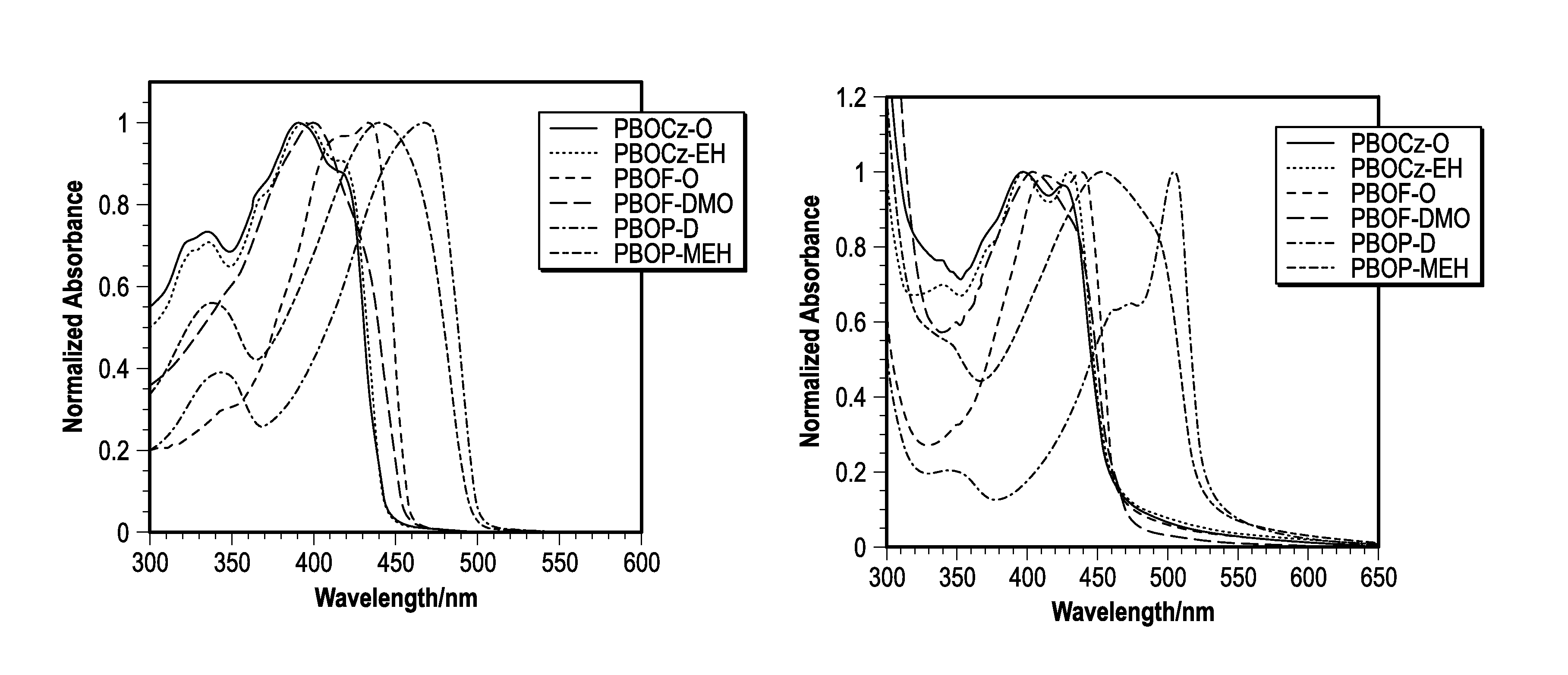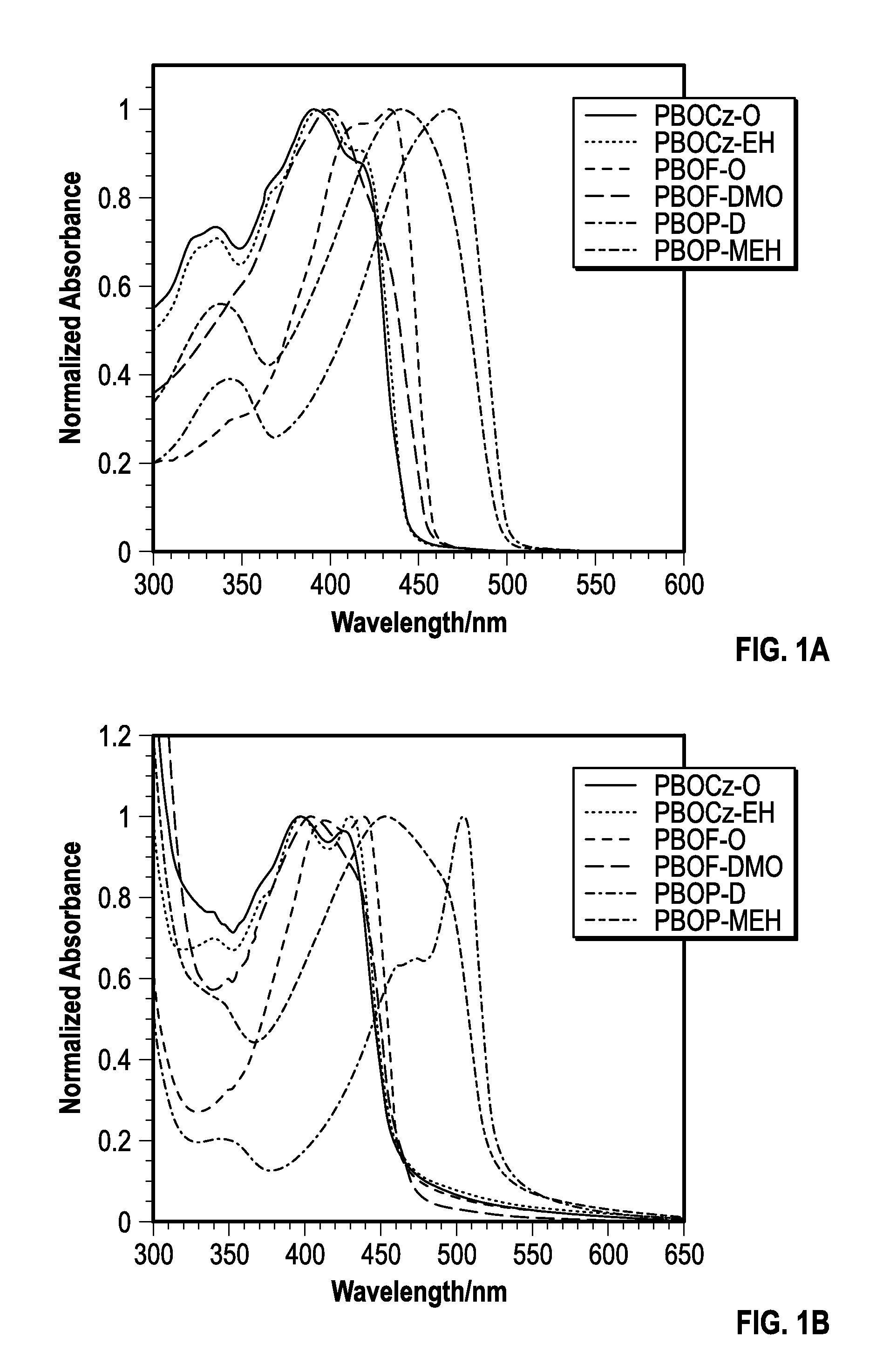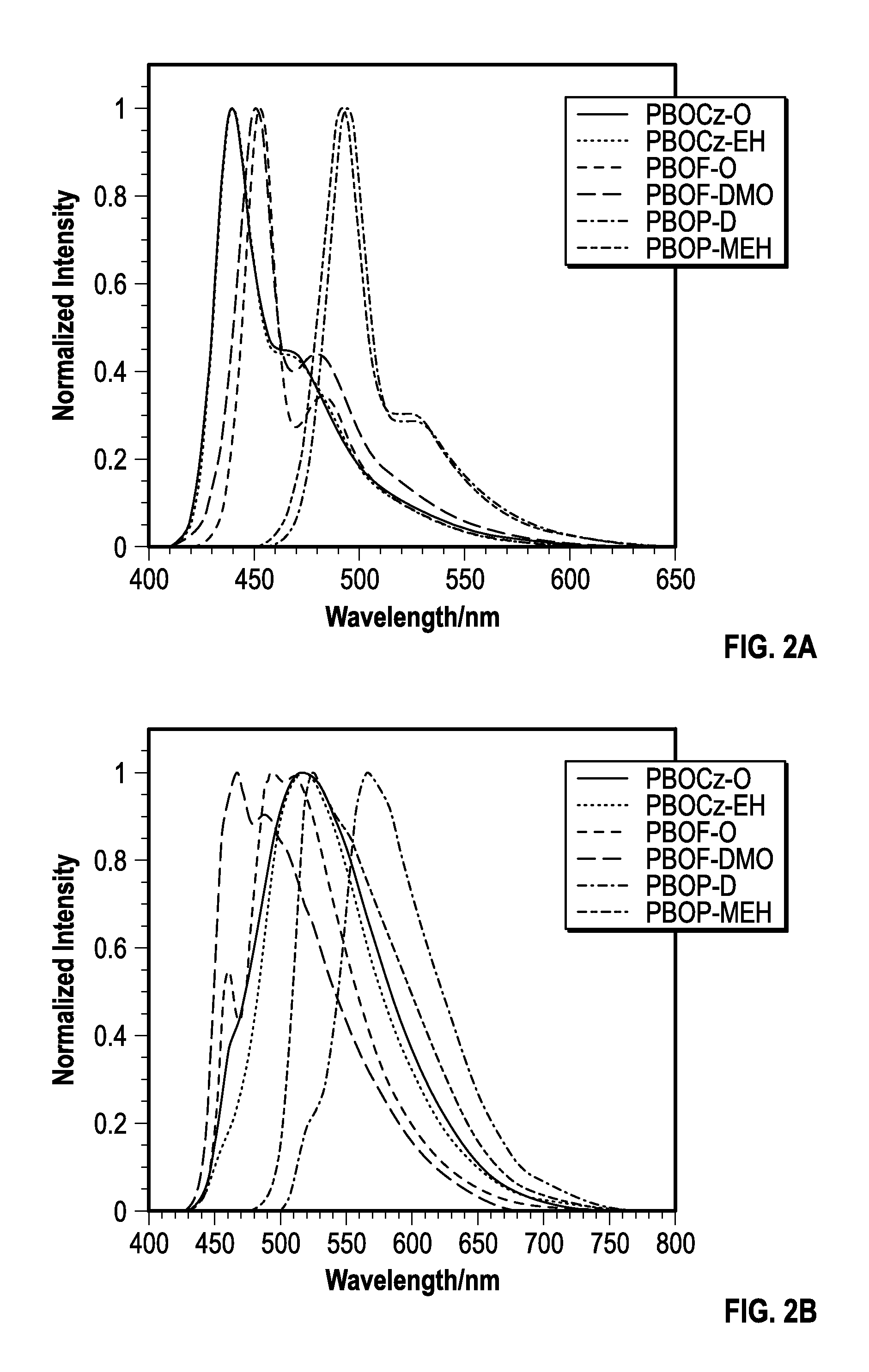Conjugated polymer and semiconductor devices including the same
a technology of conjugated polymers and semiconductor devices, applied in the direction of organic chemistry, sustainable manufacturing/processing, final product manufacturing, etc., can solve the problems of limited performance of some polymers in pleds, fluorescence quenching, and difficult synthesis of such materials, and achieves improved solubility in organic solvents, less cost, and convenient stacking
- Summary
- Abstract
- Description
- Claims
- Application Information
AI Technical Summary
Benefits of technology
Problems solved by technology
Method used
Image
Examples
example 1.1
Synthesis and Characterization
[0163]The monomer 2,6-dihexyl-4,8-dibromobenzobisoxazole (2) was prepared by the condensation of dibromodiaminohydroquinone (1) with heptanoyl chloride in the presence of poly(trimethylsilylphosphate) (PPSE). The synthetic routes to the monomer (2) and corresponding copolymers are outlined in Scheme 1. The six new copolymers were made via Sonogashira cross-coupling of monomer (2) with the corresponding dialkynyl comonomer using palladium and copper catalysts in a mixture of diisopropylamine and toluene. These conditions yielded polymers in good yields after removal of lower molecular weight material. All of the polymers were soluble in common organic solvents such as chloroform, THF, and chlorobenzene and the 1H NMR spectra were in agreement with the proposed structures for each polymer.
[0164]
[0165]
TABLE 1Physical Properties of Benzobisoxazole Polymers.YieldMwPolymer[%]Mn [kDa]a[kDa]aPDITd [° C.]bTg [° C.]cPBOCz-O7413.023.81.8354139PBOCz-EH9547.974.91.6...
example 1.2
Optical Properties
[0167]The photophysical characteristics of the polymers both in dilute solutions and thin films were examined using UV-vis absorption and fluorescence spectroscopy. The normalized absorbance spectra of the polymers in solution and films are shown in FIGS. 1a-b and the data is summarized in Table 2. The absorption profiles of PBOCz-O and PBOCz-EH were virtually identical both in solutions and films, regardless of side chain structure. In solution, these polymers had absorption maxima at 392 and 394 nm respectively, which were the shortest wavelengths of the six polymers. The absorption spectra of the carbazole polymer films showed a bathochromic shift of ˜35 nm relative to the solution spectra, which is a consequence of π-stacking between polymers in the solid state. The similarities between the PBOCz-O and PBOCz-EH spectra indicate that the branched side chain does not disrupt n-stacking any more than the linear chain. The carbazole polymers have among the largest ...
example 1.3
Ultraviolet Photoelectron Spectroscopy
[0173]The ionization potentials of the polymers were measured using ultraviolet photoelectron spectroscopy. This technique determines the HOMO energy level in organic thin films by bombarding the sample with UV photons and measuring the kinetic energies of the ejected valence electrons. Thus, the HOMO values obtained by this technique are very precise as opposed to the more commonly used technique of cyclic voltammetry, which requires the use of approximations and has a high degree of error associated with the measurements (>0.1 eV). The electron affinities (EAs) were calculated from the measured IPs using the optical band gap. These values are summarized in Table 2.
[0174]The fluorene polymers were the most electron deficient with EAs of 3.19 and 3.12 eV for PBOF-O and PBOF-DMO, respectively. The phenylene polymers were slightly more electron rich with EAs of 2.93 and 3.05 eV for PBOP-D and PBOP-MEH, respectively. The carbazoles had the lowest E...
PUM
| Property | Measurement | Unit |
|---|---|---|
| temperature | aaaaa | aaaaa |
| wavelengths | aaaaa | aaaaa |
| wavelengths | aaaaa | aaaaa |
Abstract
Description
Claims
Application Information
 Login to View More
Login to View More - R&D
- Intellectual Property
- Life Sciences
- Materials
- Tech Scout
- Unparalleled Data Quality
- Higher Quality Content
- 60% Fewer Hallucinations
Browse by: Latest US Patents, China's latest patents, Technical Efficacy Thesaurus, Application Domain, Technology Topic, Popular Technical Reports.
© 2025 PatSnap. All rights reserved.Legal|Privacy policy|Modern Slavery Act Transparency Statement|Sitemap|About US| Contact US: help@patsnap.com



